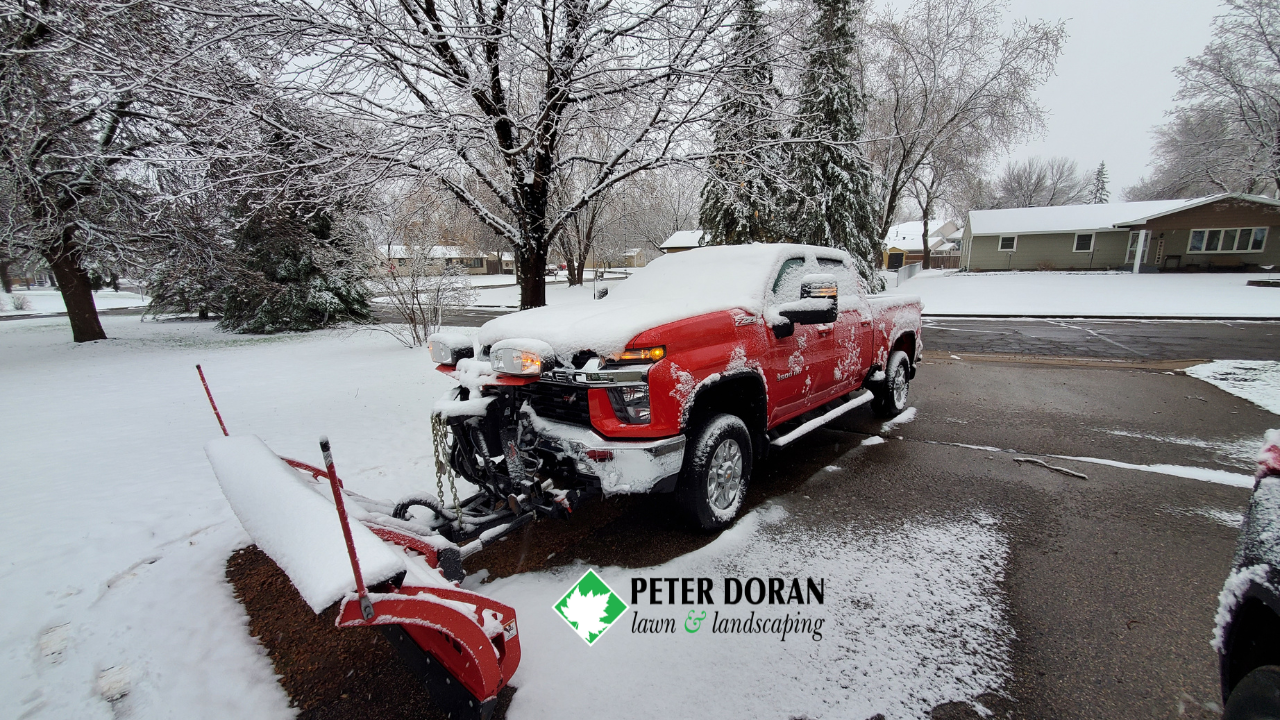Preparing Your Landscape for Winter: Protecting Shrubs and Hardscapes
As the days grow shorter and temperatures begin to drop, it’s time for homeowners to start thinking about winter landscape protection. A little preparation now can save you significant time, money, and heartache in the spring. Winter can be harsh on your beloved shrubs and hardscapes, but with the right strategies, you can minimize damage and ensure your outdoor spaces thrive for years to come.
This blog post will walk you through essential steps for safeguarding your landscape. We’ll cover everything from wrapping shrubs and mulching to sealing pavers and safe snow removal techniques. Let’s get started and ensure your landscape is ready to weather the winter!
Protecting Your Shrubs from Winter Damage
Shrubs are often the unsung heroes of our landscapes, providing structure, privacy, and beauty. However, they are also vulnerable to winter’s harsh conditions. Ice, snow, and freezing winds can cause significant damage, from broken branches to dehydration. Taking proactive measures now will give your shrubs the best chance of survival.
Wrapping Shrubs
Not all shrubs require wrapping, but young, newly planted shrubs, evergreens, and those susceptible to heavy snow loads benefit most from this frost protection. Wrapping provides a physical barrier against the elements, preventing windburn, desiccation, and breakage from heavy snow. Consider wrapping azaleas, rhododendrons, boxwoods, and other broadleaf evergreens, especially in areas prone to harsh winter winds.
The best materials for wrapping shrubs are burlap, horticultural fleece, or specially designed shrub covers. Avoid using plastic, as it can trap moisture and lead to fungal diseases. Burlap is a breathable, natural material that provides excellent insulation and protection from wind and sun. Horticultural fleece is a lightweight, synthetic fabric that offers similar benefits. Shrub covers are pre-made covers that slip easily over the plant.
Here’s a simple step-by-step guide to wrapping your shrubs:
1. Gather your materials: Burlap, horticultural fleece, or shrub cover, twine or garden staples.
2. Prepare the shrub: Gently prune any dead or damaged branches. Use soft twine to loosely tie up any wayward branches to keep the plant compact and prevent snow from splaying them out.
3. Wrap the shrub: Starting at the base, wrap the shrub with your chosen material, overlapping each layer by several inches. Ensure the entire shrub is covered, including the top. If using burlap, secure it with twine or garden staples. For shrub covers, simply slip the cover over the plant and tighten the drawstring at the base.
4. Secure the wrapping: Use twine to tie the wrapping securely in place, ensuring it won’t come loose during winter winds. If using garden staples, insert them into the ground around the base of the shrub to hold the wrapping in place.
Mulching
Mulching is not just for aesthetics; it’s an essential practice for winter landscape protection. A layer of mulch around the base of your shrubs acts as an insulator, protecting the soil from freezing and thawing cycles that can damage roots. Mulch also helps retain moisture in the soil, preventing dehydration during dry winter months. Furthermore, it suppresses weed growth, saving you time and effort in the spring.
The best types of mulch for winter are organic materials like shredded bark, wood chips, or pine straw. These materials decompose slowly, providing long- lasting insulation and soil enrichment. Avoid using rocks or gravel as mulch, as they can absorb heat during the day and radiate it back at night, potentially damaging roots.
Apply a 2-4 inch layer of mulch around the base of your shrubs, extending out to the drip line. Be sure to leave a few inches of space between the mulch and the shrub’s stem to prevent rot.
Watering
Watering shrubs before winter might seem counterintuitive, but it’s crucial for their survival. As the ground freezes, it becomes difficult for shrubs to absorb moisture. By watering deeply in the late fall, you ensure that the roots are well-hydrated before the ground freezes. This helps prevent desiccation, or drying out, which is a common cause of winter damage.
Water your shrubs thoroughly in late fall, before the ground freezes. Focus on providing a deep soaking that reaches the roots. If you experience a prolonged dry spell during the winter, consider watering your shrubs on a mild day when the ground is not frozen.
Always water in the morning to allow the foliage to dry before nightfall, reducing the risk of fungal diseases.
Maintaining Your Hardscapes Through Winter
Hardscapes, such as patios, walkways, and driveways, add beauty and functionality to your landscape. However, they are also susceptible to damage from freezing temperatures, ice, and snow. Taking steps to protect your hardscapes now will prevent costly repairs in the future.
Sealing Pavers
Sealing pavers is an essential maintenance task that protects them from staining, fading, and cracking. Paver sealers create a barrier that prevents water, oil, and other substances from penetrating the surface. This is especially important in winter, when de-icing salts and freeze-thaw cycles can cause significant damage.
The best types of paver sealers are those specifically designed for concrete or stone pavers. Look for sealers that are water-based, breathable, and resistant to UV rays and de-icing salts. Water-based sealers are environmentally friendly and easy to apply. Breathable sealers allow moisture to escape from the pavers, preventing trapped water from causing cracks. UV- resistant sealers prevent fading from sun exposure.
Here’s how to seal your pavers:
1. Clean the pavers: Thoroughly clean the pavers with a pressure washer or a paver cleaner to remove dirt, grime, and stains. Allow the pavers to dry completely before sealing.
2. Apply the sealer: Using a roller or sprayer, apply a thin, even coat of paver sealer to the surface. Follow the manufacturer’s instructions for application rates and drying times.
3. Allow to dry: Allow the sealer to dry completely before walking or driving on the pavers. This may take several hours or even a full day, depending on the product and weather conditions.
4. Apply a second coat (optional): For added protection, consider applying a second coat of sealer after the first coat has dried completely.
Protecting Concrete
Concrete is a durable material, but it’s not immune to winter damage. The freeze-thaw cycle can cause concrete to crack and crumble. When water penetrates the concrete, it expands as it freezes, putting pressure on the surrounding material. Over time, this can lead to significant damage. Proper maintenance and protection are essential to prolong the life of your concrete surfaces.
To protect concrete from cracking, avoid using de-icing salts that contain ammonium chloride or calcium chloride. These salts can corrode concrete and accelerate the freeze-thaw cycle.
Instead, use de-icing agents that are specifically formulated to be safe for concrete, such as calcium magnesium acetate (CMA) or potassium chloride. These products are less corrosive and less likely to damage your concrete surfaces.
You can also use sand or gravel to provide traction on icy surfaces.
Snow Removal
Proper snow removal is crucial for maintaining safe walkways and driveways during winter. However, improper snow removal techniques can damage your hardscapes and landscaping. Avoid using metal shovels or ice scrapers, as they can scratch and damage concrete and pavers. Instead, use plastic shovels or snow blowers with plastic blades.
When removing snow, be careful not to pile it on top of shrubs or other plants. The weight of the snow can break branches and damage foliage. Instead, clear snow away from plants and spread it evenly across your lawn. This will help insulate the soil and provide moisture for your lawn in the spring.
Additional Tips for Winter Landscape Protection
Beyond the core steps of wrapping, mulching, sealing, and snow removal, there are a few additional measures you can take to further protect your landscape from winter damage.
- Pruning: Late fall or early winter is an excellent time to prune dormant trees and shrubs. Remove any dead, damaged, or crossing branches to improve air circulation and prevent breakage from heavy snow loads. Pruning also encourages healthy growth in the spring.
- Protecting Outdoor Furniture: If you have outdoor furniture, consider storing it in a shed or garage during the winter months. If storage is not an option, cover your furniture with waterproof tarps or covers to protect it from the elements. This will prevent fading, cracking, and other damage.
- Inspecting Irrigation Systems: Before winter arrives, inspect your irrigation system for any leaks or damage. Drain the system completely to prevent pipes from freezing and bursting. Insulate any exposed pipes or valves with foam insulation to protect them from freezing temperatures.
What This Means for Your Property
Preparing your landscape for winter is an investment in the long-term health and beauty of your outdoor spaces. By taking proactive steps to protect your shrubs and hardscapes, you can minimize damage, prevent costly repairs, and ensure that your landscape thrives for years to come.
Don’t wait until the first snowfall to take action. Start preparing your landscape now, and enjoy the peace of mind that comes with knowing you’ve done everything you can to protect your property from winter’s harsh conditions.



